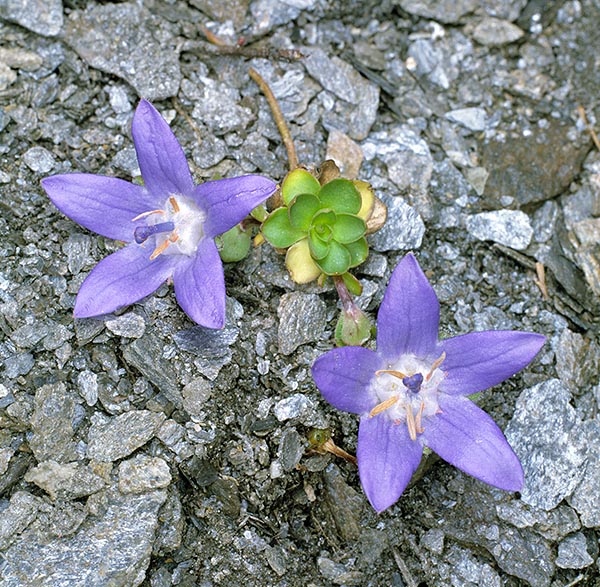Family : Campanulaceae

Text © Dr Barbara Barisani

English translation by Mario Beltramini

Campanula cenisia is a little common orophyte endemic to Alps © Giuseppe Mazza
The etymology of the genus comes from the diminutive “campanula” of the Latin term “campana” and means “small bell”. The epithet of the species “cenisia” comes from the Latin “cenisius” relevant to the Cenischia valley or to the small town of Moncenisio, located in the Western Alps.
It is probably in this area that the first specimens of this species were observed and described.
The common names are: Campanula del Moncenisio (Italian), Campanule du Mont Cenis (French), Mont-Cenis-Glockenblume (German), Mt. Cenis Bellflower (English).
This is a perennial herbaceous plant, 2 to 8 cm tall. It presents basal rosettes from which depart prostrate-ascending stems, some of which carrying on top one flower only, whilst others are sterile.
The flower has a diameter going from 10 to 22 mm. The corolla is formed by 5 pale blue or lilac petals and is subdivided up to more than half of its length, with the lobes opening in a star. The calyx measures 5 to 7 mm and has 5 linear teeth provided with hairs.
It blooms between July and September. The leaves are roundish to obovate, sessile, alternate along the stalks, fleshy, have ciliated hairs at the base and have entire margin. The fruit is a dehiscent capsule and the seeds get out through apical pores. Its choice environments are the high mountain calcareous screes, the debris of calcschists, the moraines, the alluvial soils of the Alpine streams, between the 2000 and the 3800 m of altitude. These unique environments render very difficult its cultivation. However, it can be admired in the Alpine botanical gardens, where are recreated with care the optimal environmental conditions.
This species of great interest and rarity is usually protected and its seeds are stored in the gene banks.
